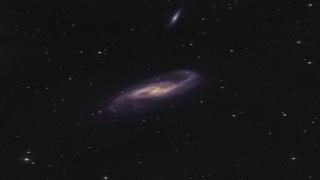Brough, Sarah; Ahad, Syeda Lammim; Bahé, Yannick M.; Ellien, Amaël; Gonzalez, Anthony H.; Jiménez-Teja, Yolanda; Kimmig, Lucas C.; Martin, Garreth; Martínez-Lombilla, Cristina; Montes, Mireia; Pillepich, Annalisa; Ragusa, Rossella; Remus, Rhea-Silvia; Collins, Chris A.; Knapen, Johan H.; Mihos, J. Christopher
Bibliographical reference
Monthly Notices of the Royal Astronomical Society
Advertised on:
2
2024
Citations
38
Refereed citations
33
Description
Intracluster light (ICL) provides an important record of the interactions galaxy clusters have undergone. However, we are limited in our understanding by our measurement methods. To address this, we measure the fraction of cluster light that is held in the Brightest Cluster Galaxy and ICL (BCG+ICL fraction) and the ICL alone (ICL fraction) using observational methods (surface brightness threshold-SB, non-parametric measure-NP, composite models-CM, and multi-galaxy fitting-MGF) and new approaches under development (wavelet decomposition-WD) applied to mock images of 61 galaxy clusters (14 <log10M200c/M⊙ < 14.5) from four cosmological hydrodynamical simulations. We compare the BCG+ICL and ICL fractions from observational measures with those using simulated measures (aperture and kinematic separations). The ICL fractions measured by kinematic separation are significantly larger than observed fractions. We find the measurements are related and provide equations to estimate kinematic ICL fractions from observed fractions. The different observational techniques give consistent BCG+ICL and ICL fractions but are biased to underestimating the BCG+ICL and ICL fractions when compared with aperture simulation measures. Comparing the different methods and algorithms, we find that the MGF algorithm is most consistent with the simulations, and CM and SB methods show the smallest projection effects for the BCG+ICL and ICL fractions, respectively. The Ahad (CM), MGF, and WD algorithms are best set up to process larger samples; however, the WD algorithm in its current form is susceptible to projection effects. We recommend that new algorithms using these methods are explored to analyse the massive samples that Rubin Observatory's Legacy Survey of Space and Time will provide.
Related projects

Spiral Galaxies: Evolution and Consequences
Our small group is well known and respected internationally for our innovative and important work on various aspects of the structure and evolution of nearby spiral galaxies. We primarily use observations at various wavelengths, exploiting synergies that allow us to answer the most pertinent questions relating to what the main properties of
Johan Hendrik
Knapen Koelstra